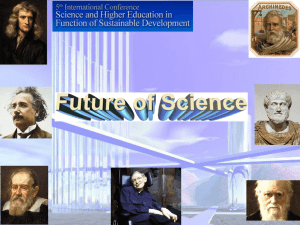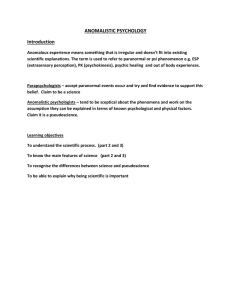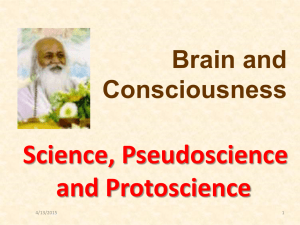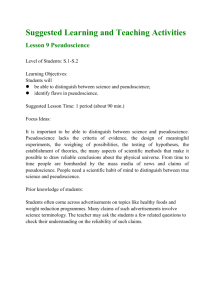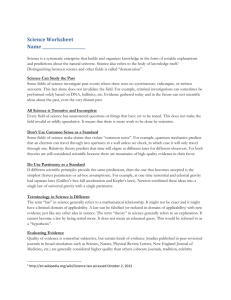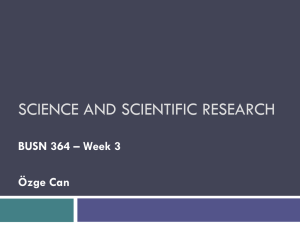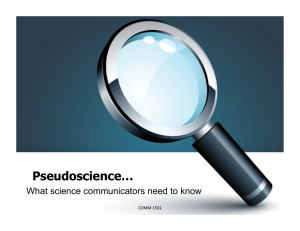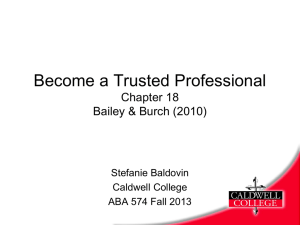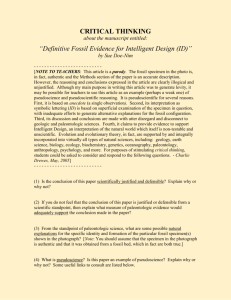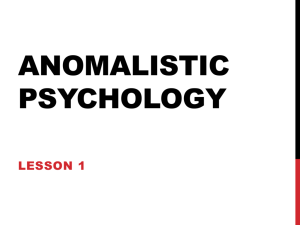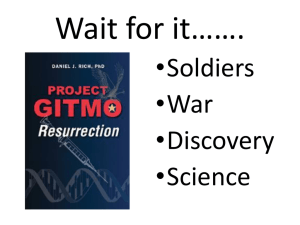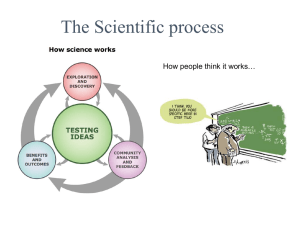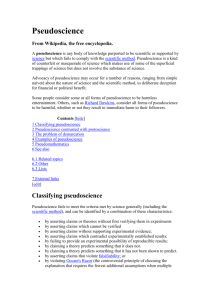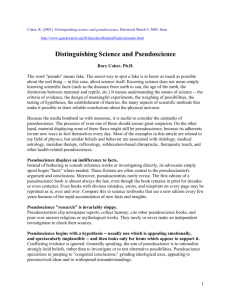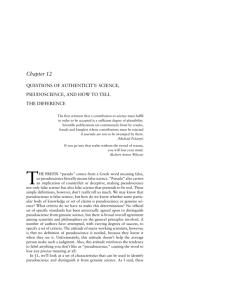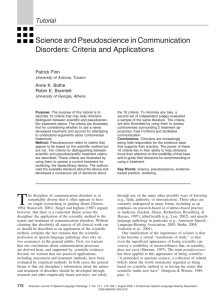Science vs. Pseudoscience
advertisement
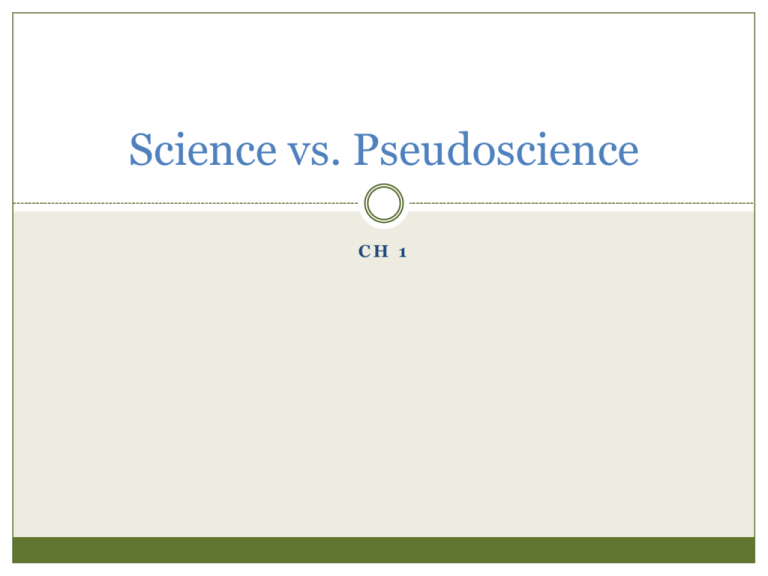
Science vs. Pseudoscience CH 1 Popular psychology topics: myth or real Most people use only 10% of their brain Expressing anger is better than holding it in Opposites attract in relationships High self-esteem is needed for good psychological health Listening to Mozart can make infants smarter A full moon can trigger wacky behavior Your first guess is the right one on a test Most people will have a mid-life crisis Handwriting can reveal personality traits Pseudoscience “Claims that appear to be scientific but that actually violate the criteria of science.” “Claims exhibit superficial trappings of science but little of its substance” (Lilienfeld, 2004) Examples? Crop circles, alien abductions, Big Foot, … What about… hypnosis for memory recovery, multiple personality disorder, Rorschach inkblot test, handwriting analysis, polygraphs…? Scientific revolution (new paradigm/theory) or pseudoscience? Thomas Kuhn (1970) http://www.youtube.com/watch?v=GT3N0GiLyTQ&feature=related What are the “criteria of science”? Scientific approach (ch1) Systematic empiricism Design controlled study to observe behavior and draw conclusions Publicly verifiable knowledge Present research so it can be observed, replicated, criticized and tested in other ways Empirically solvable problems Questions are potentially answerable (can’t as “is there life after death”) Principle of falsifiability – possible to disconfirm hypothesis Characteristics of Pseudoscience (Lilienfeld, 2004) A tendency to invoke loopholes or ad hoc hypotheses to immunize claims from falsification An absence of self-correction; intellectual stagnation An emphasis on confirmation A tendency to place burden of proof on skeptics Excessive reliance on anecdotal and testimonial evidence to substantiate claims Evasion of scrutiny afforded by peer review Absence to build on existing scientific knowledge Use of impressive-sounding jargon Absence of boundary conditions or where claims do not hold Pseudoscience and Science Each has a different approach to evidence Science seeks out contradictory evidence; and adds it into theory Good or bad science, NOT good or bad scientist No scientist is free of biases But, can be aware of biases and try to control them Pseudoscience beliefs are not foolish or stupid Don’t be a critic just to be contrary There are remarkable theories that appear to be true Seek out the truth – require good research methods! Do not confuse pseudoscience beliefs with religious beliefs “Religious claims cannot be tested empirically so are outside the boundaries of science” (Lilienfeld, 2004) Pseudoscience Scientific American Frontiers video Palm reading Dowsing Alien body discovered Zero-point energy Handwriting analysis Healing touch What are the claims? What is the evidence of pseudoscience? During video… Claims Evidence of Pseudoscience Criteria to differentiate science from pseudoscience Science Pseudoscience Gather data (especially Gathers anecdotal data quantitative) Seeks to confirm and disconfirm theory Tries new theories Admits need for more research Seeks criticism from others – publishes data (qualitative) Suppresses/distorts unfavorable data Stagnant theories Does not admit need for more research Sees self as authority – uses obscure language Identify science or pseudoscience Article 1: Dixon, Smilek, Cudahy, & Merikle (2000). Five plus two equals yellow. Nature, 406, 365. Article 2: Tressoldi & Del Prete (2007). ESP under hypnosis. Journal of Parapsychology, 71, 125-138. What are the claims? What are your criticisms? What criticism do you have of their methodology? How could you test their claims? ESP What are the characteristics of pseudoscience? http://www.youtube.com/watch?v=6TKn8H6vnW0 What are the claims? What are your criticisms? What are the methodology/statistic problems? How could you test their claims? Synesthesia What are the characteristics of pseudoscience? When senses collide http://science.discovery.com/videos/when-senses-collide-origins.html What are the claims? What are your criticisms? What are the methodology/statistic problems? How could you test their claims? Dowsing What are the characteristics of pseudoscience? Using dowsing rods to measure human aura http://video.google.com/videoplay?docid=- 7092818733187587554&ei=EiRvS6yRGIToqALN6IjnBg&q=dowsing+video# What are the claims? What are your criticisms? What are the methodology/statistic problems? How could you test their claims?
